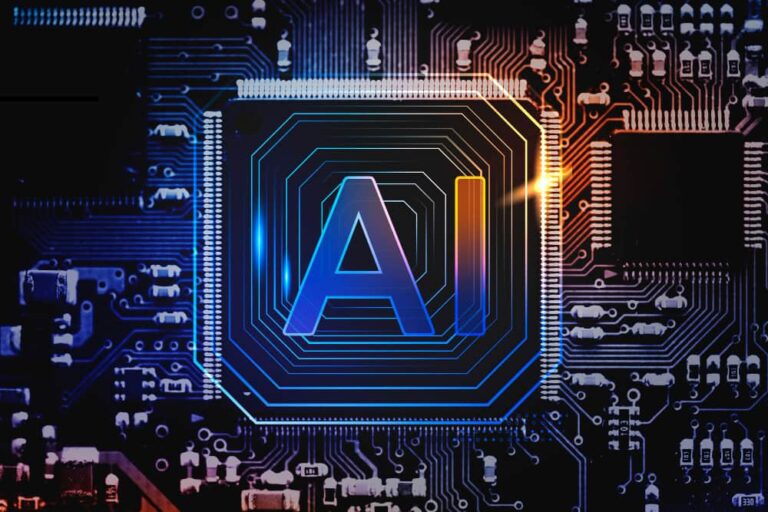In the grand tapestry of human achievement, the journey beyond our planet has long stood as a testament to our insatiable curiosity and unyielding spirit of exploration. As we stand on the precipice of a new era, the advancements in human spaceflight technology are poised to propel us into uncharted realms, marking humanity’s next giant leap into the cosmos. This cosmic odyssey, characterized by innovation and daring endeavors, promises to reshape our understanding of space and our place within it.
The historical legacy of human spaceflight, from the iconic Apollo moon landings to the Space Shuttle era, has set the stage for an unprecedented chapter in space exploration. Today, a wave of technological breakthroughs is ushering in a new era of space travel, one that envisions not only reaching distant celestial bodies but establishing a sustained human presence beyond Earth. This blog will unravel the intricate tapestry of advancements that is propelling us toward this cosmic frontier, exploring the evolution of spacecraft, the revolutionary propulsion systems driving deep space travel, and the critical role of artificial intelligence in shaping the future of human space exploration.
In delving into the intricacies of life support systems and sustainable space travel, we will uncover the challenges and solutions that pave the way for extended human habitation beyond our home planet. From the intricate dance of robotic companions to the collaborative synergy of artificial intelligence, we will unravel the role of cutting-edge technologies in making human space exploration safer, more efficient, and profoundly transformative. Join us on this cosmic journey as we embark on humanity’s next giant leap, where the realms of imagination meet the tangible achievements propelling us toward the stars.
Evolution of Spacecraft Technology
The evolution of spacecraft technology stands as a testament to human ingenuity, as we transition from the iconic capsules of the past to the cutting-edge spacecraft of the future. Early space exploration was marked by humble yet groundbreaking vehicles like the Vostok and Mercury capsules, carrying pioneers like Yuri Gagarin and John Glenn into the cosmos. Today, however, we witness a paradigm shift with spacecraft designs that seamlessly blend functionality, safety, and efficiency.
One of the defining trends in spacecraft technology is the rise of reusable spacecraft. Spearheaded by private entities like SpaceX, reusable rocket stages have become a game-changer, significantly reducing the cost of access to space. With innovations like the Falcon 9 and Falcon Heavy, we are witnessing a shift from the traditional expendable launch vehicles to a more sustainable and cost-effective model, opening up new frontiers for exploration and commercial ventures.
Moreover, advancements in materials science have contributed to the development of lightweight yet robust spacecraft components. Cutting-edge materials, such as advanced composites and alloys, enhance the structural integrity of spacecraft while minimizing weight—a critical factor in the pursuit of efficiency and performance. This evolution in materials technology plays a pivotal role in crafting spacecraft capable of enduring the rigors of space travel.
As we navigate through this section, we’ll explore the transformative journey of spacecraft design, from the historic capsules of the Space Race to the sophisticated, multi-functional vehicles driving our current era of space exploration. The trajectory of spacecraft technology not only reflects our technological prowess but also lays the groundwork for the spacecraft that will carry astronauts and payloads into the cosmic landscapes of tomorrow.
Propulsion Systems for Deep Space Travel
Venturing into the vastness of deep space requires propulsion systems that push the boundaries of what was once thought possible. In the realm of human spaceflight and interplanetary exploration, advancements in propulsion systems are shaping the trajectory of our cosmic journey.
Traditional chemical propulsion, while reliable, has limitations in terms of efficiency and speed. Enter the era of ion propulsion and other cutting-edge technologies designed for deep space missions. Ion propulsion systems leverage the principle of accelerating ions to generate thrust, offering a more fuel-efficient alternative for extended missions. NASA’s Dawn spacecraft, for instance, utilized ion propulsion to explore the asteroid belt, showcasing the potential of this technology.
Beyond ion propulsion, the development of nuclear thermal propulsion holds promise for future deep space exploration. Unlike conventional chemical rockets, nuclear thermal propulsion harnesses the energy generated by nuclear reactions to heat a propellant, producing thrust. This technology could significantly reduce travel time for crewed missions to destinations like Mars, opening up new frontiers for human exploration.
In this section, we delve into the innovative propulsion systems propelling spacecraft into the depths of our solar system and beyond. From the efficiency gains of ion propulsion to the transformative potential of nuclear thermal propulsion, these advancements represent a leap forward in our ability to navigate the vast distances inherent in deep space travel. As we explore these propulsion technologies, we gain insights into the evolving landscape of space exploration and the exciting possibilities that lie ahead.
Life Support and Sustainable Space Travel
Embarking on extended space missions requires not only advanced propulsion systems but also sustainable life support technologies to ensure the well-being of astronauts during their cosmic sojourns. As humanity sets its sights on prolonged spaceflights, the development of life support systems becomes a critical aspect of human space exploration.
In the vast expanse of space, astronauts are confronted with challenges such as microgravity, radiation, and the absence of a readily available life-sustaining environment. Crafting solutions to address these challenges involves intricate systems that go beyond basic life support functions seen on shorter missions. Advancements in sustainable space travel demand innovations in life support technologies that promote the physical and mental health of spacefarers.
Cutting-edge life support systems incorporate closed-loop environmental control and life support systems (ECLSS), which aim to recycle and regenerate resources within the spacecraft. This includes efficient recycling of air, water, and waste, reducing dependence on Earth-bound supplies. Such closed-loop systems contribute to the sustainability of long-duration spaceflights by minimizing the need for extensive resource resupply missions.
Furthermore, advancements in biological and psychological support systems are crucial for the holistic well-being of astronauts. Research into cultivating crops in space, understanding the effects of prolonged space travel on the human body, and developing psychological support mechanisms are all integral components of sustainable life support in space.
In this section, we explore the intricacies of life support systems, emphasizing their role in enabling sustainable space travel. From recycling essential resources to fostering the psychological resilience of astronauts, these innovations lay the groundwork for humanity’s enduring presence in the cosmos.
The Role of Robotics and AI in Space Exploration
As humanity ventures deeper into the cosmos, the synergy between human exploration and artificial intelligence (AI) becomes increasingly paramount. Robotics and AI technologies have emerged as indispensable companions, enhancing our capabilities and enabling unprecedented feats in the realm of space exploration.
Autonomous Exploration Vehicles: One of the frontiers where AI and robotics shine is in the development of autonomous exploration vehicles. These intelligent robotic rovers and drones are designed to navigate distant celestial bodies, collecting data and imagery. Equipped with advanced algorithms, these machines can make real-time decisions, adapting to the challenges of unpredictable terrains and delivering valuable insights without human intervention.
Enhanced Mission Efficiency: In the vastness of space, where distances are colossal and communication delays are inevitable, AI plays a pivotal role in enhancing mission efficiency. Autonomous systems onboard spacecraft can analyze data, troubleshoot issues, and adjust mission parameters, reducing the need for constant human oversight. This not only streamlines operations but also allows for more agile responses to dynamic situations.
Machine Learning for Data Analysis: The abundance of data generated during space missions requires sophisticated analysis, and this is where machine learning algorithms come into play. AI systems, powered by machine learning, can sift through vast datasets, identifying patterns, anomalies, and potential areas of scientific interest. This accelerates the pace of discoveries and maximizes the scientific return from space missions.
Human-AI Collaboration: While AI and robotics demonstrate their prowess in autonomous operations, they are also designed to collaborate seamlessly with human astronauts. Robotic assistants can aid astronauts in performing tasks, mitigating risks, and handling routine operations, allowing humans to focus on more complex challenges that demand human intuition and creativity.
In this section, we delve into the symbiotic relationship between robotics, AI, and human space exploration. From autonomous rovers on distant planets to the integration of machine learning in data analysis, these technological marvels redefine the possibilities of space exploration, promising a future where human ingenuity and artificial intelligence propel us to new cosmic frontiers.

Future Human Space Exploration Missions
As we stand on the brink of a new era in space exploration, the roadmap for future human missions extends far beyond our current capabilities. The convergence of cutting-edge technologies, scientific advancements, and international collaboration is poised to propel humanity into uncharted territories. In this section, we explore the exciting prospects and potential milestones that lie ahead in the realm of future human space exploration.
Interplanetary Travel: One of the most ambitious goals in our quest for space exploration is interplanetary travel. Initiatives such as NASA’s Artemis program aim to return humans to the Moon as a stepping stone for subsequent missions to Mars. The dream of establishing a sustainable human presence on the Red Planet represents a paradigm shift in our understanding of our place in the cosmos.
Space Tourism: The concept of space tourism is rapidly transitioning from science fiction to reality. Private companies are actively working on making space travel accessible to civilians, offering suborbital flights and the opportunity to experience weightlessness. This burgeoning industry holds the promise of democratizing space exploration, allowing individuals to become firsthand witnesses to the wonders of the cosmos.
International Collaboration: The future of human space exploration is marked by unprecedented international collaboration. Collaborative efforts between space agencies and private entities are fostering a collective approach to addressing the challenges of space exploration. The International Space Station (ISS) serves as a testament to the success of global cooperation, providing a platform for scientific research and technological innovation.
Sustainable Space Habitats: As we contemplate prolonged human presence beyond Earth, the development of sustainable space habitats becomes imperative. Innovative concepts such as space stations, lunar bases, and Martian colonies are under consideration. These habitats will rely on advanced life support systems, recycling technologies, and closed-loop ecosystems to ensure the long-term well-being of inhabitants.
Exploration Beyond the Solar System: The most visionary aspect of future human space exploration involves venturing beyond our solar system. While this remains a long-term goal, discussions and theoretical frameworks for interstellar travel are gaining momentum. Concepts like generation ships and breakthrough propulsion systems fuel our aspirations for reaching distant star systems.
In this segment, we peer into the crystal ball of space exploration, outlining the trajectory of future human missions. From lunar endeavors to interplanetary odysseys, the next decade holds the promise of transformative achievements that will redefine our understanding of the cosmos and humanity’s place in the universe.
Conclusion
The journey through the advancements in human spaceflight technology unveils a tapestry of innovation, courage, and the relentless pursuit of exploring the cosmos. From the early days of space exploration marked by the daring endeavors of astronauts like Yuri Gagarin and Neil Armstrong to the sophisticated technologies of today, humanity has traversed a remarkable path beyond the boundaries of Earth.
As we stand at the precipice of a new era, the future of human space exploration promises unprecedented opportunities and challenges. The synergistic interplay of evolving spacecraft technology, propulsion systems, life support mechanisms, and the integration of artificial intelligence is propelling us toward the realization of extraordinary missions.
Interplanetary travel, once confined to the realm of science fiction, is becoming a tangible goal with initiatives like NASA’s Artemis program and the prospect of human missions to Mars. The burgeoning space tourism industry is poised to turn celestial dreams into accessible realities, allowing individuals to become spacefarers.
International collaboration has emerged as a cornerstone of our endeavors, exemplified by the International Space Station, demonstrating that the collective human spirit can transcend geopolitical boundaries in the pursuit of shared cosmic goals.
Sustainable space habitats, the backbone of extended human presence in space, will rely on innovative technologies to create self-sufficient ecosystems. The vision extends beyond the Moon and Mars, envisioning humanity as a multi-planetary species.
The role of robotics and artificial intelligence is transforming space exploration, enhancing mission efficiency, and enabling tasks beyond human capabilities. As we envision the future, the prospect of exploring exoplanets and venturing beyond our solar system ignites the imagination, pushing the boundaries of what we deem possible.
In conclusion, the future of human space exploration is a tapestry woven with the threads of innovation, discovery, and the human spirit’s unwavering determination. The cosmos beckons, inviting us to embark on journeys that will redefine our understanding of the universe and, in turn, ourselves. The chapters yet to be written promise to be both challenging and awe-inspiring, as humanity takes its next giant leap into the cosmos.




